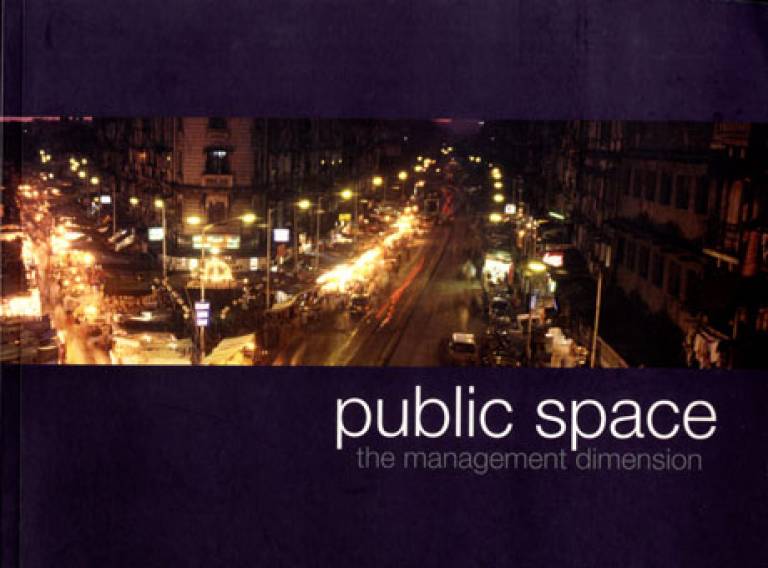Public Space: the management dimension

16 September 2008
Matthew Carmona, Claudio de Magalhaes, and Leo Hammond (2008) Routledge
This book by Matthew Carmona, Claudio de Magalhaes and Leo Hammond, draws on four empirical research projects to examine the questions of public space management on an international stage. They are set within a context of theoretical debates about public space, its history, contemporary patterns of use, and the changing nature of Western society; and about the new management approaches that are increasingly being adopted.
In both the UK and the US there is a sense of dissatisfaction and pessimism about the state of urban environments and particularly with the quality of everyday public spaces. Explanations for this have emphasised the poor quality of design that characterises many new public spaces; spaces that are dominated by parking, roads infrastructure, introspective buildings, a poor sense of place, and which in different ways for different groups are to often exclusionary.
Yet many well designed public spaces have also experienced decline and nelect, as the services and activities upon which the continuing quality of those spaces depends have been subject to the same cuts and constraints as public services in general. These issues touch upon the daily management of public space, that is, the co-ordination of the many different activities that constantly define and redefine the characteristics and quality of public space.
 Close
Close

